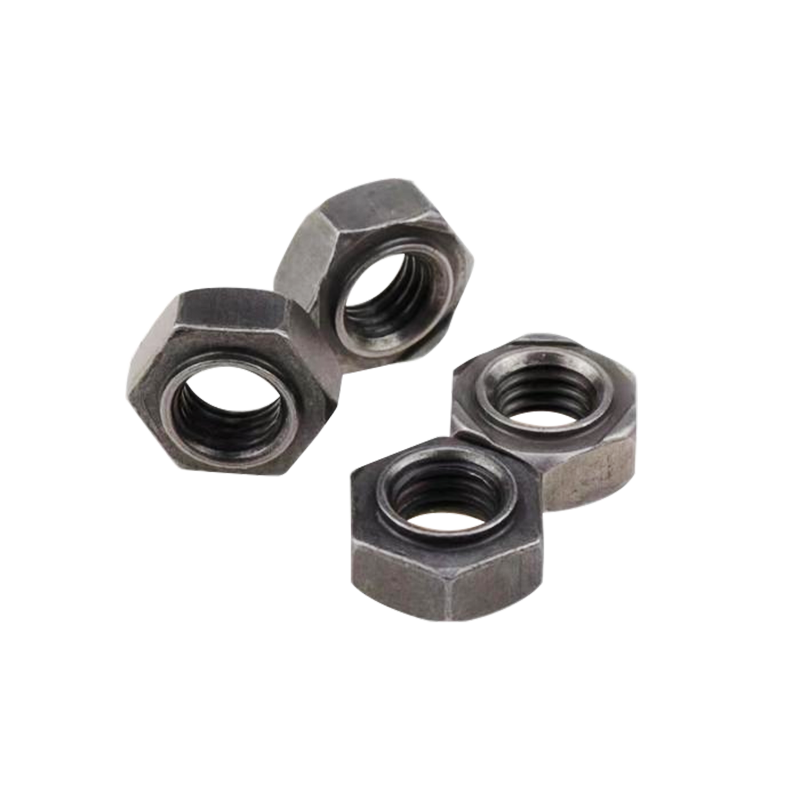What advantages do hexagon weld nuts offer in metal fabrication?
Hexagon weld nuts play a pivotal role in metal fabrication processes, offering distinct advantages that make them a preferred choice for creating secure threaded connections in various industrial applications. Understanding these advantages highlights their significance in enhancing efficiency, reliability, and structural integrity within metalworking operations.
Secure and Reliable Attachment
One of the primary advantages of hexagon weld nuts in metal fabrication is their ability to provide a secure and reliable attachment. Unlike conventional nuts that rely on mechanical fastening methods like screws or bolts, hexagon weld nuts are welded directly onto metal surfaces. This welded connection ensures robust holding strength, capable of withstanding significant loads and vibrations encountered in industrial environments. This feature is particularly crucial in applications where maintaining joint integrity is critical to operational safety and performance.
Versatility Across Different Metals
Hexagon weld nuts exhibit versatility in their application across a wide range of metals commonly used in metal fabrication. Whether it’s steel, aluminum, stainless steel, or other alloys, these nuts can be effectively welded onto various metal surfaces. This versatility makes them adaptable for use in diverse industries such as automotive manufacturing, construction, aerospace, and machinery production, where different materials may be employed based on specific performance requirements.
Efficiency and Time Savings
In high-volume manufacturing settings, efficiency is paramount. Hexagon weld nuts contribute significantly to streamlined assembly processes, reducing labor time and costs associated with traditional fastening methods. By eliminating the need for additional fasteners like screws or rivets, manufacturers can accelerate production cycles while maintaining consistent quality standards. This efficiency not only enhances overall productivity but also optimizes resource utilization within the fabrication facility.
Strength and Load-Bearing Capacity
The inherent strength of hexagon weld nuts ensures exceptional load-bearing capacity, making them suitable for applications demanding structural integrity and durability. Whether used in heavy machinery, structural components, or industrial equipment, these nuts provide a robust threaded connection that withstands high mechanical stresses and dynamic forces. This strength is crucial in environments where reliability under pressure is non-negotiable, ensuring long-term performance and minimizing downtime due to fastener failure.

Corrosion Resistance and Longevity
Depending on the material chosen, such as stainless steel variants, hexagon weld nuts offer excellent resistance to corrosion and environmental degradation. This attribute extends their service life in outdoor or harsh operating conditions where exposure to moisture, chemicals, or extreme temperatures could compromise joint integrity. By selecting appropriate materials, manufacturers can enhance the longevity of assemblies and reduce maintenance requirements, thereby optimizing operational efficiency and lifecycle costs.
Design Flexibility and Integration
Hexagon weld nuts are available in various sizes, thread types, and configurations to accommodate specific design requirements and application needs. This flexibility allows engineers and designers to tailor solutions that meet precise specifications, whether for standard installations or custom fabrication projects. Moreover, the compatibility of hexagon weld nuts with automated assembly processes enhances manufacturing efficiency, enabling seamless integration into modern production lines and robotic systems.
Environmental and Cost Benefits
Beyond their technical advantages, hexagon weld nuts contribute to environmental sustainability by minimizing material waste associated with traditional fastening methods. By eliminating the need for separate fasteners and reducing assembly complexity, manufacturers can achieve cost efficiencies over time. The initial investment in welding equipment and processes is offset by long-term savings in maintenance and replacement costs, underscoring the economic viability of using hexagon weld nuts in metal fabrication.
Related products
-

Hexagonal Nylon Head Series
-

Pan Head Cross Series Drill Tail Screws
-

Round Head Huasi Cross Series Drill Tail Screws
-

Pan Head Cross Series
-

Cross Flat Head Dry Wall Nail
-

Large Flat Head Plum Blossom Groove Grass Rope Nail
-

10.9 Grade Flange Outer Hexagonal Fine Thread Bolt
-

Grade 8.8 Outer Hexagonal Bolt
-

304 Stainless Steel Teeth
-

Hexagon Weld Nuts
-

Iron Galvanized Flange Nut Hexagonal Anti Slip Locking Belt Tooth Washer Screw Cap
-

Stainless Steel Countersunk Head Self-Tapping Screw

 English
English  English
English 中文简体
中文简体 русский
русский


